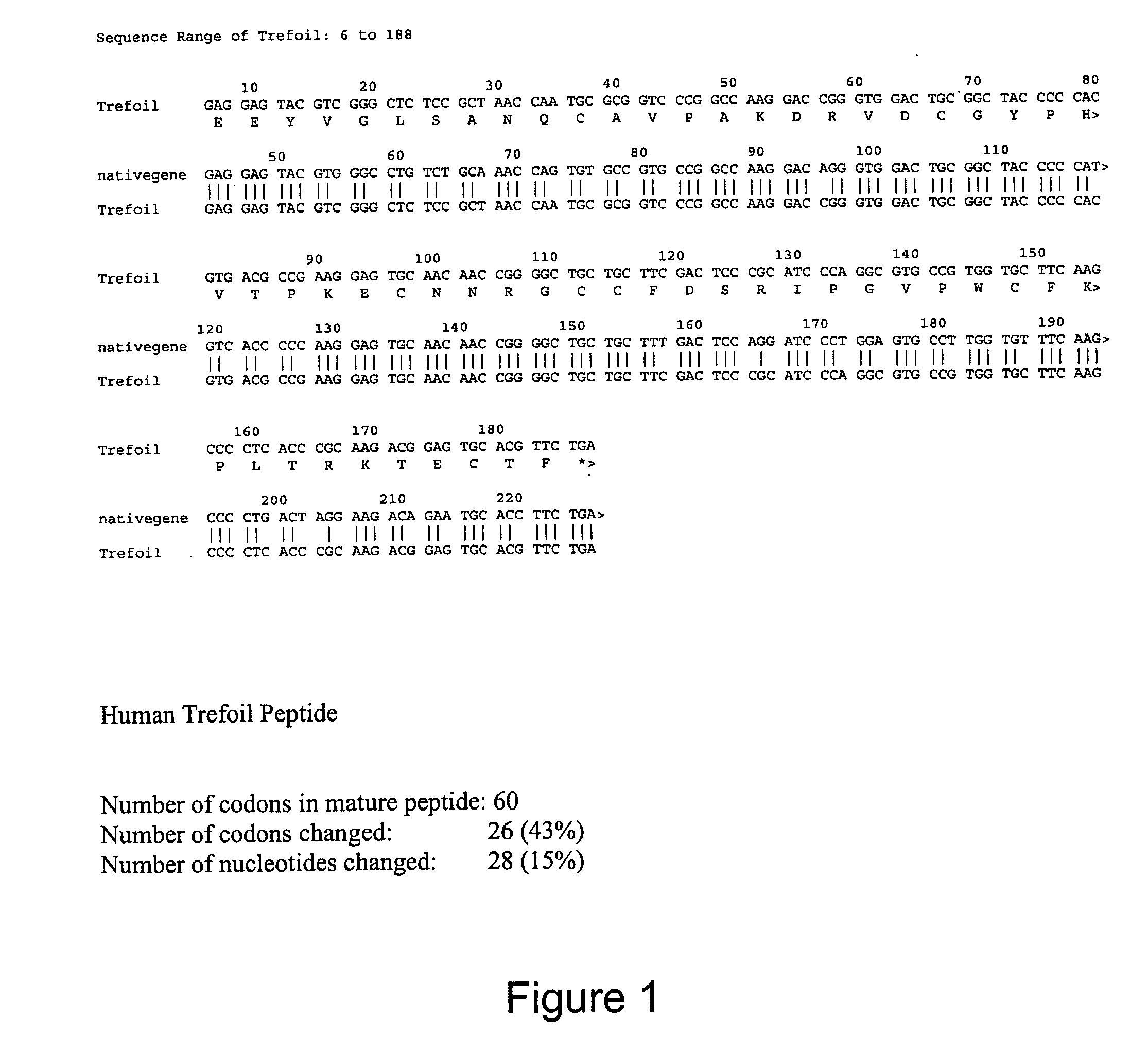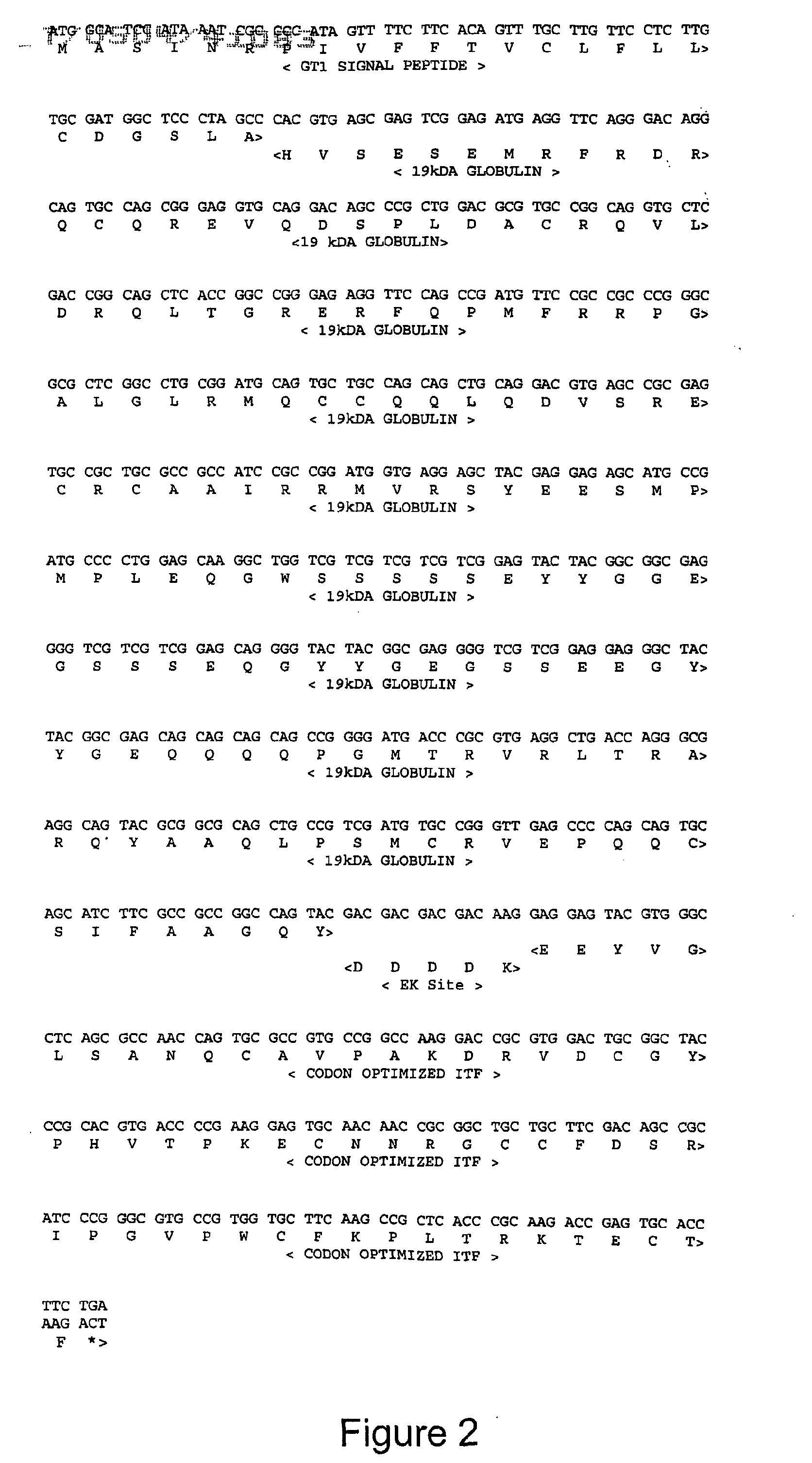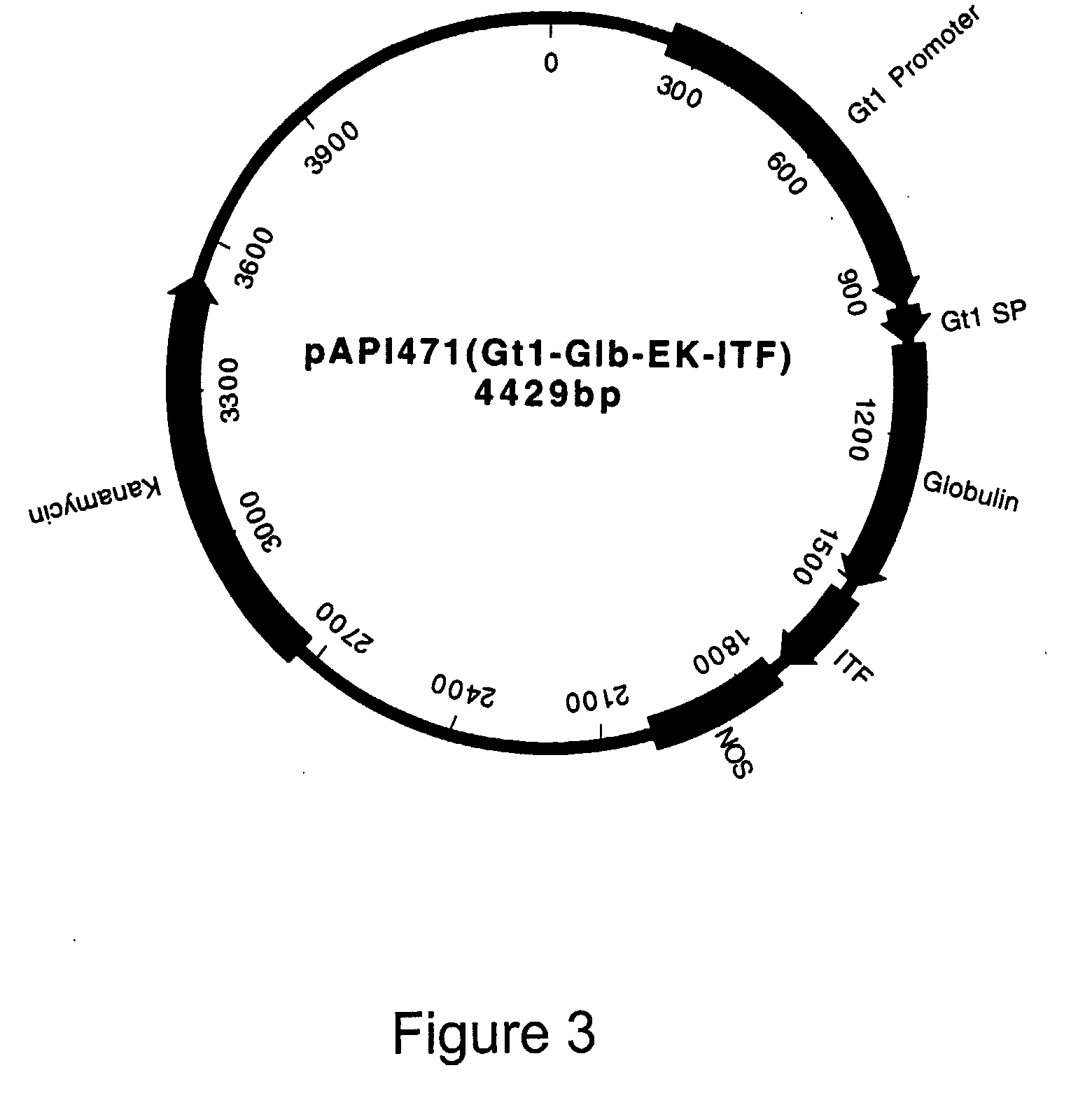High-level expression of fusion polypeptides in plant seeds utilizing seed-storage proteins as fusion carriers
a technology of fusion polypeptides and plant seeds, which is applied in the field of expression of heterologous peptides or polypeptides in the seeds of monocot plants, can solve the problems of increasing the cost structure of a given heterologous peptide, difficult or impossible to produce heterologous peptides by chemical synthesis methods, and short supply of heterologous peptides and polypeptides, etc., to achieve the effect of improving the expression of heterologous peptid
- Summary
- Abstract
- Description
- Claims
- Application Information
AI Technical Summary
Benefits of technology
Problems solved by technology
Method used
Image
Examples
example 1
Human ITF Sequence and Plasmid Construction
[0111] Human ITF DNA sequence was based on the GenBank accession number L08044. This sequence encodes an open reading frame of 75 amino acid ITF peptide. For expression of mature ITF in rice grains, the DNA sequence encoding the 60 amino acid mature ITF peptide was codon-optimized (ITF, FIG. 1) based on a codon-table specific for the expression of endogenous rice genes.
[0112]FIG. 1 shows the comparison of the codon-optimized DNA sequence for the expression of the 60 amino acid mature portion of intestinal trefoil factor (ITF) in rice grains. ‘Native genes’ refers to the normal human ITF DNA sequence while ‘Trefoil’ refers to the codon-optimized ITF DNA sequence. The corresponding amino acid sequence is listed below the DNA sequence.
[0113]FIG. 2 presents the nucleotide and amino acid sequences for the constructed Gt1 signal peptide fused with the 19 kDa globulin protein (Glb) as a fusion carrier, the enterokinase (ek) cleavage site and th...
example 2
Rice Transformation and Plant Regeneration
[0119] A selectable marker plasmid pAPI176, consisting of the hygromycin B phosphotransferase (Hph) gene driven by the Gns9 promoter and followed by a NOS terminator, provided the selectable marker DNA segment for all plant transformations. Plasmid DNA was digested with appropriate enzymes to linearize the DNA and was then separated by 1% low melting agarose gel. After separation, the DNA fragment was eluted from the agarose gel slices and the agarose was removed by digestion with Agarase.
[0120] The DNA was precipitated and run on a gel to check for linear DNA purity with respect to intact plasmid DNA. A total of 50 μl of gold particles were coated with 0.65 μg DNA and the DNA amounts of the selected marker fragment and target gene fragment were calculated at a molar ratio of 1:1. Rice calli obtained from immature rice embryos were prepared for transformation as described by Huang et al. (Molec. Breeding 10, 83-94, 2001). Microprojectile-p...
example 3
Analysis of ITF-Containing Fusion Protein Expression in Mature Rice Grains
[0121] For protein extraction, individual dehusked rice grains from transgenic plants containing the construct of ITF-fusion protein were placed in the wells of a grinding plate. Each well was given 0.2 ml of extraction buffer, Tris-buffered saline (TBS) plus 0.35M NaCl. The grains were ground using a Genome Grinder for 12 minutes at 1300 strokes per minute. The resulting seed extracts were centrifuged at 4000 rpm for 20 minutes and the seed supernatants were transferred to a new plate.
[0122] Alternatively, 10 dehusked rice grains were pooled and ground with a mortar and pestle in 2 ml of extraction buffer, TBS plus 0.35M NaCl, and then mixed for 1.5 hours at 37° C. The mixed slurry was centrifuged at 12000 rpm for 12 minutes and the supernatant was transferred to a 2 ml Eppendrof tube and stored at −20° C. for future analysis.
[0123] For expression level analysis, a total of 32 μl (approximately 50-60 μg to...
PUM
| Property | Measurement | Unit |
|---|---|---|
| fresh weight | aaaaa | aaaaa |
| pH | aaaaa | aaaaa |
| pH | aaaaa | aaaaa |
Abstract
Description
Claims
Application Information
 Login to View More
Login to View More - R&D
- Intellectual Property
- Life Sciences
- Materials
- Tech Scout
- Unparalleled Data Quality
- Higher Quality Content
- 60% Fewer Hallucinations
Browse by: Latest US Patents, China's latest patents, Technical Efficacy Thesaurus, Application Domain, Technology Topic, Popular Technical Reports.
© 2025 PatSnap. All rights reserved.Legal|Privacy policy|Modern Slavery Act Transparency Statement|Sitemap|About US| Contact US: help@patsnap.com



